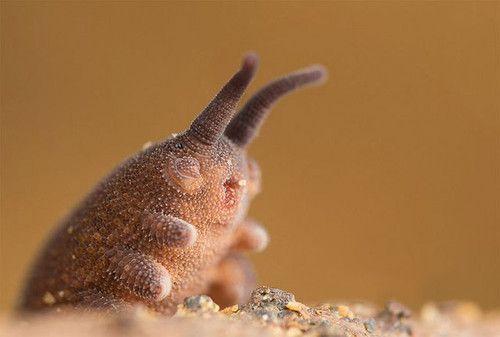WTF: 'My Neighbor Totoro' Provides Name For Rare Worm Species
Now there is a Totoro worm. Maybe you have a dog or a cat named Totoro but did you find and name a species of worm after Hayao Miyazaki's fan-favorite character? I didn't think so. Researchers have detailed the discovery and naming of a new species of velvet worm, found in Vietnam. Thanks to some specific physical characteristics, the creature is named after Totoro.
A scientific paper out of Germany (via Wired UK and The Dissolve) reports that a new species of Velvet Worm, Eoperipatus totoros. "is named after the main character of the cartoon movie "My Neighbour Totoro" by Hayao Miyazaki (1988, studio Ghibli), who uses a many-legged animal as a vehicle..."
Here's the worm:

So in this case it's kind of Totoro + Catbus, it would seem. But the best bit is in the details.
Here's Wired explaining a bit:
Velvet worms are curious slime-spewing enigmas. They are off on their own odd branch of the tree of crawly things called Onychophora. Not worms, not insects, millipedes, centipedes, or slugs. ... Because Onycophorans are soft-bodied and desiccate quickly, they need damp, humid environments to thrive. They like dark soils, rocks, and rotting logs in tropical forests, and are quite difficult to find. ... Onychophorans don't have a hard, rigid exoskeleton like the Arthropods, but are blobby bags with wee little legs with claws at the ends. Hydrostatic pressure allows them to lumber along, slowly, on jointless legs.
Maybe you caught that "slime-spewing" phrase early on. A couple of those nodules on the head aren't eyes or appendages — they're slime cannons. Wired again:
Onychophorans can't chase down their prey, but they can ensnare them by spraying sticky goo to trap them. They have a range that Spider-Man would envy. Once the prey is slimed, the worm waddles up and chows down. Velvet worms also eat any leftover slime, recycling the protein and sugar-rich slime.
All of which makes the thing sound like it might be more at home in Nausicaa than any other Miyazaki story — or maybe it could be mixed in with the other sea creatures of Ponyo? All in all, this is essentially a Miyazaki super-worm, which makes it our favorite little new discovery of the month.
